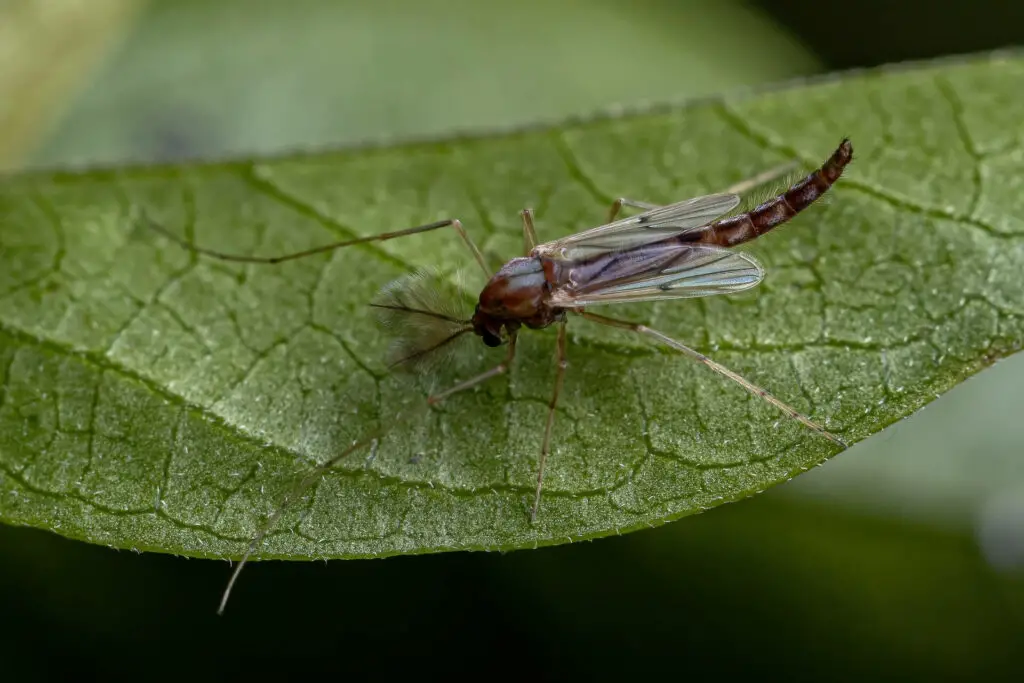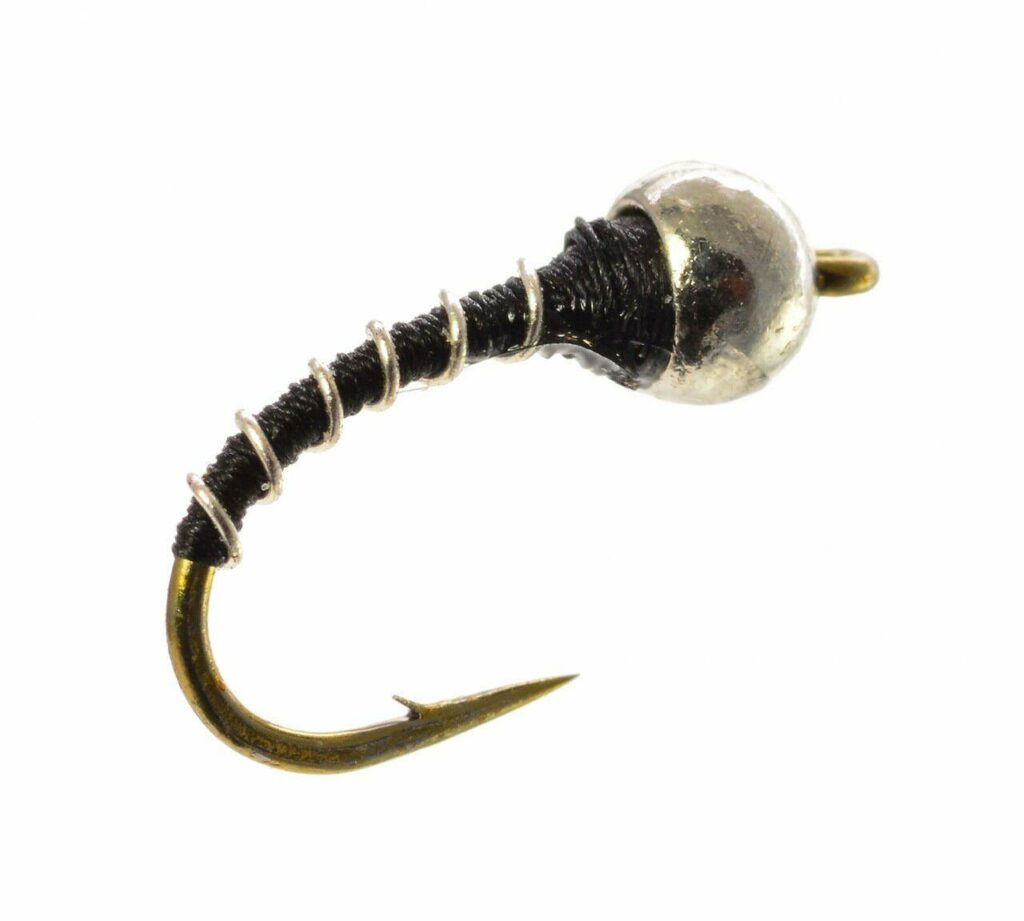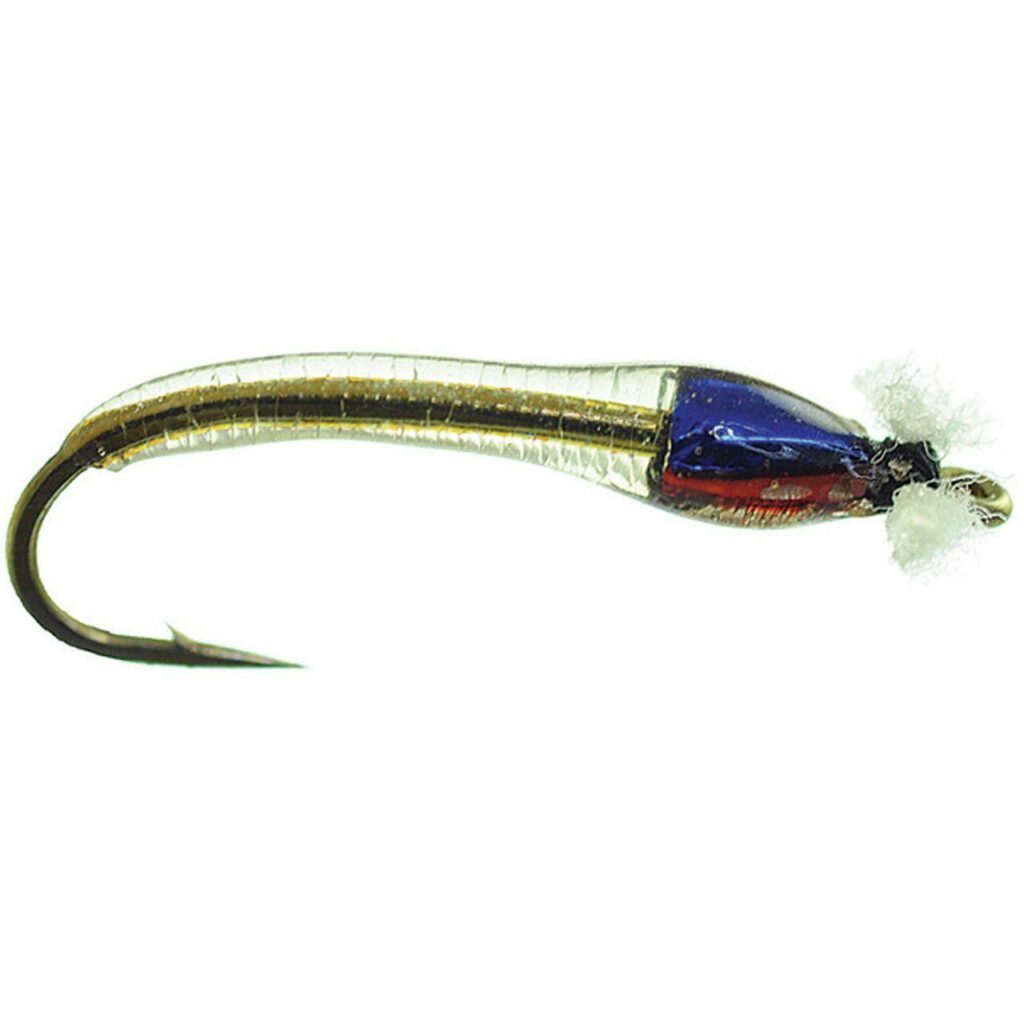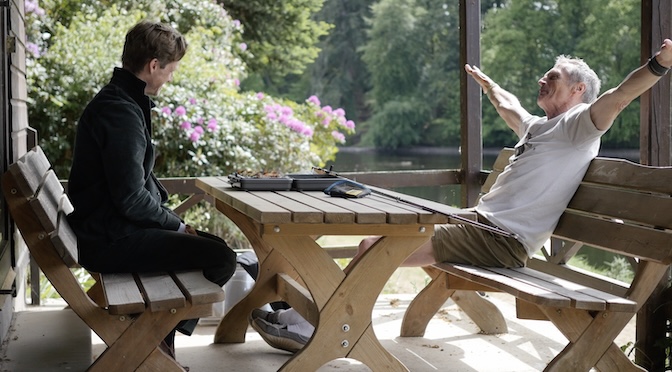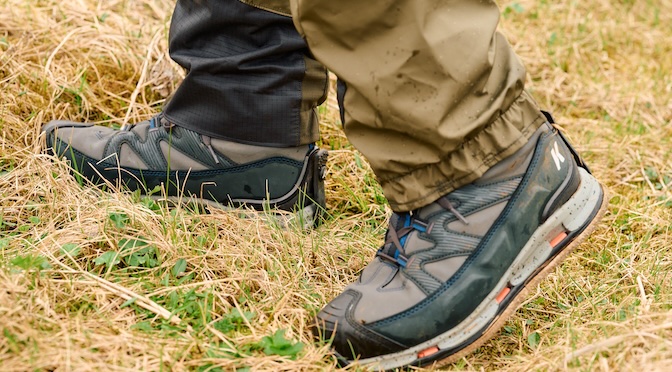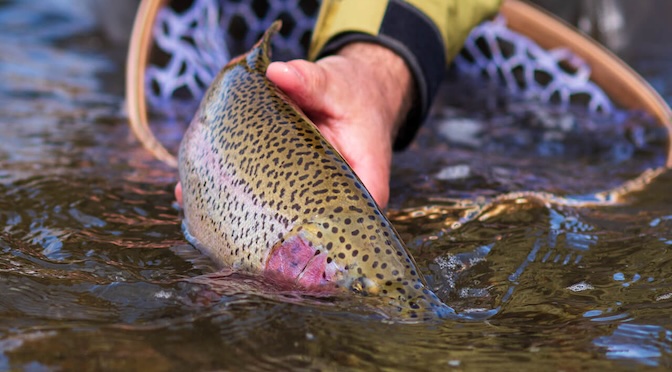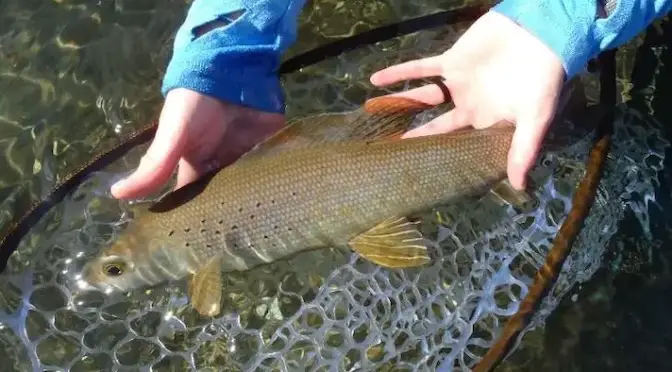Last updated on May 22nd, 2023.
- Wading Wisdom #13 – Simon Gawesworth - July 7, 2025
- On the Water with the Korkers Bantam Lite - June 26, 2025
- How to Find Trout in Rivers & Streams Anywhere - June 13, 2025
Are you in search of a reliable technique to catch trout and grayling? Midge fly fishing is a great option that can provide hours of entertainment and success on the water.
Midges are small aquatic insects found in most bodies of water, with different stages such as larva, pupa and adult midges. Knowing when to use them, what gear works best and how to properly rig your line will make all the difference in catching those elusive trout. In this article we’ll explore everything there is to know about midge fly fishing – from understanding the life cycle of these tiny creatures, to finding out which patterns imitate them best. We’ll also discuss tips and tricks for rigging up correctly so you can maximize your chances at landing some trophy trout.
Table of Contents:
Gear for Fly Fishing with Midges
Techniques for Fly Fishing with Midges
Tips and Tricks for Fly Fishing With Midge Flies
Most Popular Midge Fly Patterns
FAQs in Relation to Midge Fly Fishing
What is a Midge Fly?
Midges are small, two-winged flies that are common in freshwater streams and lakes. Midges can be seen in a range of shapes and hues, from dark to olive green or even ivory. Midges progress through four distinct stages – egg, larva, pupa and adult – during their life cycle. During the larval stage they can be found living near the bottom of bodies of water where they feed on organic matter such as algae and decaying plant material. As adults they emerge from the water to mate before laying eggs near the surface which hatch into larvae within days.
Types of Midges
There are several different types of midges including Chironomidae (nonbiting midge), Simuliidae (black fly), Ceratopogonidae (no-see-ums) and Psychodidae (moth fly). Each type has its own unique characteristics but all share similar traits such as having two wings with long antennae attached to their heads. The most commonly encountered type is Chironomid midge which can range in size from 1/8th inch up to 3/4ths inch in length depending on species.
Life Cycle Of Midges
The life cycle begins when an adult female lays her eggs near the surface of a body of water where they will hatch into larvae within days depending on temperature and other environmental factors. Larvae live at the bottom feeding off organic matter until reaching maturity when it then undergoes metamorphosis into a pupa before emerging as an adult ready for mating season usually occurring between late spring through early fall months depending on location and climate conditions.
Midges are an important part of the fly fishing experience, and understanding when to fish with them is just as essential. By exploring conditions for fishing with midges, best times to use them, and ideal locations for catching fish on a midge pattern, you can become more successful in your angling endeavors.
Key Takeaway: Midges are small flies that populate freshwater streams and lakes. They have a four-stage life cycle, from egg to adult stages, with the most common type being Chironomid midges. These insects typically mate during late spring through early fall months depending on location and climate conditions.
When to Fish with Midges
Fishing with midges can be a great way to catch fish, especially in the spring and fall when other insect hatches are scarce. To get the most out of your fly fishing experience with midges, it’s important to understand what conditions are best for them and when they will be active.
Conditions for Midge Fly Fishing
The key factor for success when fishing with midges is water temperature. Midges prefer temperatures between 40-60 degrees Fahrenheit, so if you’re looking to target trout on a cold winter day or a warm summer evening then midge flies may be your go-to choice. It also helps if there is some wind blowing as this can help keep the surface of the water agitated which will attract more insects like midges. Additionally, look for areas where there is plenty of vegetation as this provides food sources that these aquatic bugs feed on throughout their life cycle stages.
Best Times to Fish With Midges
As mentioned above, one of the best times to use midge patterns is during colder months such as late autumn through early springtime when other insect hatches aren’t present or abundant enough to draw in large numbers of trout into feeding frenzies near shorelines and riverside shallows. During these periods, having an assortment of different sizes and colors in your fly box will increase your chances at finding what works best depending on how finicky fish are being that day due to weather changes or spawning activity going on nearby.
When it comes to locating waters where you should try using midge patterns, look no further than slow moving streams or stillwaters such as ponds and lakes that have plenty of vegetation around its perimeter (i.e., cattails). These types of habitats tend to provide ample amounts of food sources year round, making them ideal places to find hungry trout willing to take whatever bait comes along.
By understanding the conditions, best times and locations to fish with midges, you can maximize your success while fly fishing. With the right gear in hand, you will be ready to start catching more fish when using midge flies.
Key Takeaway: Midge flies are ideal for fly fishing in cold weather or warm summer evenings, when trout congregate near vegetation-rich shorelines and riverside shallows. To get the most out of your midge experience, look to slow moving streams or stillwaters such as ponds and lakes with plenty of foliage – these spots tend to be swimming with hungry fish ready to bite.
Gear for Fly Fishing with Midges
Fly fishing with midges requires specialized gear to be successful. The right rod, reel, line, leader and flies are essential for catching fish on the water. Here’s what you need to know about each piece of equipment when fly fishing with midges.
Rods and Reels for Fly Fishing with Midges
When fly fishing with midge flies, it is important to use a light-action rod that has a delicate tip so you can detect even the slightest bite from your target species. A 4- or 5-weight rod, of either 8′ or 9′, is ideal for fly fishing with midges; the size depending on where you’re angling. For reels, look for one that is lightweight but still able to hold enough backing line should you hook into something larger than expected while out on the water.
Lines and Leaders for Fly Fishing Midges
Lines designed specifically for dry fly presentations are ideal when using midge patterns as they allow anglers to make delicate casts without spooking wary trout feeding on tiny insects like midges near the surface of rivers and streams. For leaders, use tippets ranging from 6X up through 4X depending on how clear or murky your waters may be; lighter tippet will give more natural drifts which will increase your chances at getting bites.
When choosing flies to use while targeting fish eating midge larvae or pupae near the surface, it is best to stick with imitations such as Griffith’s Gnats or Zebra Midge patterns tied onto small hooks (size 18 – 24). To help keep these tiny patterns visible in low light conditions, try adding some floatant before casting them out onto likely looking spots where trout may be rising just beneath the surface film during hatches of these aquatic insects throughout spring and summer months. Additionally, having plenty of spare tippet material handy is always recommended since it can get easily tangled up when making multiple casts over long periods of time.
Having the right gear is essential for successful fly fishing with midges. Now, let’s examine some approaches to get the most out of your fly fishing experience with midges.
Key Takeaway: To successfully fly fish with midges, you’ll need a light-action rod and reel combo coupled with dry-fly line and leader tippets from 6X up to 4X. Additionally, be sure to bring along imitations such as Griffith’s Gnats or Zebra Midge patterns on small hooks (size 18 – 24) plus some floatant for visibility in low light conditions. Keep spare tippet material close by too.
Techniques for Fly Fishing Midges
Presentation Techniques for Fly Fishing with Midges
When fly fishing with midges, the presentation of your flies is key. Midge patterns should be presented lightly and delicately on the water’s surface in order to mimic their natural behavior. A slow hand-twist retrieve can also help create a realistic imitation. To ensure that your pattern stays afloat, use a dry shake or floatant on it prior to casting. For an even more effective presentation, try using an indicator such as yarn or foam when fishing deep pools or fast moving water where you may not be able to detect subtle takes from fish feeding on midge larvae.
Retrieve Techniques for Fly Fishing with Midges
If there is no visible activity from trout but you still suspect they are present, then it may be best to switch up your retrieves by adding pauses between strips or twitches during them which can sometimes trigger aggressive reactions from lurking predators below.
When fly fishing midges, it is important to understand the various presentation and retrieve techniques in order to have success. To maximize success when fly fishing with midges, employing a variety of techniques and strategies can be beneficial.
Tips and Tricks for Fly Fishing With Midge Flies
When fly fishing with midge flies, it’s important to use light tippets. A light tippet is a thin line that connects the leader and the fly, and should be no thicker than 4X for best results. This will help you achieve a natural presentation of your midge fly on the water surface. Additionally, using a dropper fly can also increase your chances of success when targeting fish with midges. By adding an additional weighted nymph or emerger below your dry midge pattern, you can present two different types of food sources at once to entice feeding trout. Lastly, don’t forget to take advantage of slack water areas when fishing with midges as these areas often hold more active fish due to their slower current speeds which allow them easier access to food sources like emerging insects.
Most Popular Midge Fly Patterns
Midge flies are a popular choice for fly fishing, and there are many different patterns to choose from.
Zebra Midge Fly Pattern
One of the most popular midge patterns is the Zebra Midge. This pattern consists of a black thread body with silver wire ribbing and a bead head. The Zebra Midge Fly Pattern imitates small aquatic insects that live in rivers and streams, making it an effective choice when targeting trout or other species of fish that feed on these bugs.
Jujubee Midge Flash Fly
The Jujubee Midge Flash Fly is another great midge pattern for fly fishing. This pattern features an element with and also imitates the small air bubbles that many insects have when emerging from the bottom of the river or lake. This pattern is available in multiple colors (olive, blue, red and zebra) to ideal match the current fishing situation.
Taks Crystal Chironomid Fly
For those looking for something to convince trout in lakes and reservoirs, the Taks Crystal Chironomid Fly is an excellent option. This pattern is intended to imitate large chironomids found in bigger bodies of water. The UV resin body is very attractive to trout (and char just as well) and also very durable which means you can fish it for longer. The synthetic gills are the icing on the cake and often convince wary fish to take your fly.
No matter what type of midge fly you choose, remember that light tippets, dropper flies, slow retrieves, slack water presentations and using appropriate gear will all help increase your chances of success when out fishing this time honored insect imitation method.
What’s the Difference Between Midge and Nymph?
When it comes to fly fishing, understanding the difference between midge and nymph is key for successful angling. While they may look similar, there are a few key distinctions that can help you choose the right type of bait or lure for your next outing.
Size: One of the most obvious differences between midges and nymphs is size; midges tend to be much smaller than their counterparts. Midge larvae range from 1-3mm in length while adult midges measure around 5-7mm long – making them some of the smallest flies available on the market today! In comparison, nymphs typically measure anywhere from 8-20mm in length depending on species.
Habitat: Another way to distinguish between these two types of aquatic insects is by looking at where they live. Midge larvae are found living near water surfaces such as lakes or ponds while adults prefer slow moving streams with plenty of vegetation nearby – this makes them ideal targets for dry fly fishing techniques like skittering or hovering over a streambed! Meanwhile, nymphs usually inhabit deeper waters where they feed off bottom sediment and debris which makes them better suited towards wet fly fishing tactics like swinging or dead drifting through rifflesruns instead.
Appearance: Lastly, another major difference between these two bugs lies in their appearance; midges have thin bodies with small wings whereas nymphs tend to have thicker abdomens and larger wings (which helps them stay afloat). Additionally, many species of both will also feature distinct color patterns which can help identify what type you’re dealing with when out on the water – so make sure you take note before casting away!
Lifecycle: Finally, one more important distinction worth noting here has to do with lifecycles; midge larvae go through three stages before becoming an adult (larva -> pupa -> adult) while most other aquatic insects only require two (nymph -> adult).
What Are the Best Midge Fly Colors?
Midge flies come in a variety of colors, and it can be difficult to know which ones will work best for you. Generally speaking, the most successful midge fly colors are black, brown and olive. These colors tend to imitate natural midges found in streams and rivers across the world.
Black is often used as an all-purpose color when fishing with midges. It works well during low light conditions or when there’s not much activity on the water surface. Black also tends to blend into the background better than other colors so it won’t spook fish that may be lurking nearby.
Brown is another popular choice for anglers who are looking to match their fly patterns with local hatches of midges. Brown imitates many species of larva and pupa found in streams around the world and can be very effective when targeting trout or grayling during a hatch event.
Olive is great for matching adult midge hatches as well as emerging larvae from nymphs transitioning into adults on the water surface film layer near shorelines or over deeper pools where they congregate before hatching out completely above water level. Olive colored flies have been known to bring up some big fish if fished correctly!
Conclusion
In conclusion, midge fly fishing is a great way to target fish in many different conditions. It can be a test, yet in the event that done accurately, it very well may be fulfilling. With the right gear and techniques, you’ll have success catching trout with midges throughout the year. Remember to use light tippets, set up dropper flies and look for slack water areas when fly fishing with midges for best results.
Disclaimer: We use affiliate marketing in this article. If you click on one of the links provided, we may earn a small commission at no extra cost for you. This helps to support our business. Learn more about our review process here.
FAQs
What are some fun facts about midges?
Midges are a type of small fly, often found near still or slow-moving water. Midges can vary from 1 to 10 millimeters and be seen in a range of hues, such as black, gray, olive green and even red. Midges have an important role as food sources for fish like trout and salmon that feed on them while they are hatching. The larvae of midges live underwater where they filter organic matter out of the sediment before pupating into adult flies which emerge onto the surface to mate. Some species also produce silk threads during their larval stage which help protect them from predators such as dragonfly nymphs.
What is the purpose of midge flies?
Midge flies are small, lightweight artificial lures used in fly fishing. They imitate the natural midge larvae found in most freshwater streams and lakes, which are a primary food source for trout and other fish species. Midge flies have an advantage over larger artificial lures because they can be cast accurately with light tackle, allowing anglers to target specific areas of water where fish may be feeding on them. Additionally, their tiny size allows them to blend into the environment better than larger baits or lures making it easier for wary fish to take them without spooking away from the area entirely.
Are midge flies harmful?
No, midge flies are not harmful. Midges may be a bother, yet they are not dangerous to people or creatures. Midge flies are small non-biting insects that feed on algae and decaying matter in the water. While their presence can be a nuisance, they generally cause no harm and should not deter fly fishermen from enjoying their sport.
What attracts midge flies?
Midges are attracted to a variety of factors, including light and temperature. They prefer warm temperatures between 50-80 degrees Fahrenheit and bright sunlight or artificial lighting. Midge flies also seek out still waters such as lakes, ponds, streams, rivers and even puddles that contain organic matter like decaying vegetation or algae for food sources. Finally, midges are drawn to areas with high humidity levels which provide an ideal environment for their reproduction cycle.

